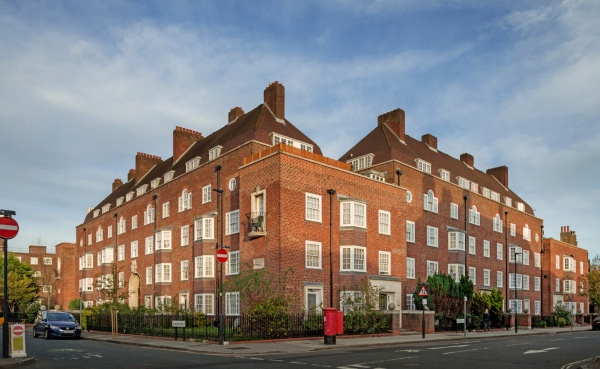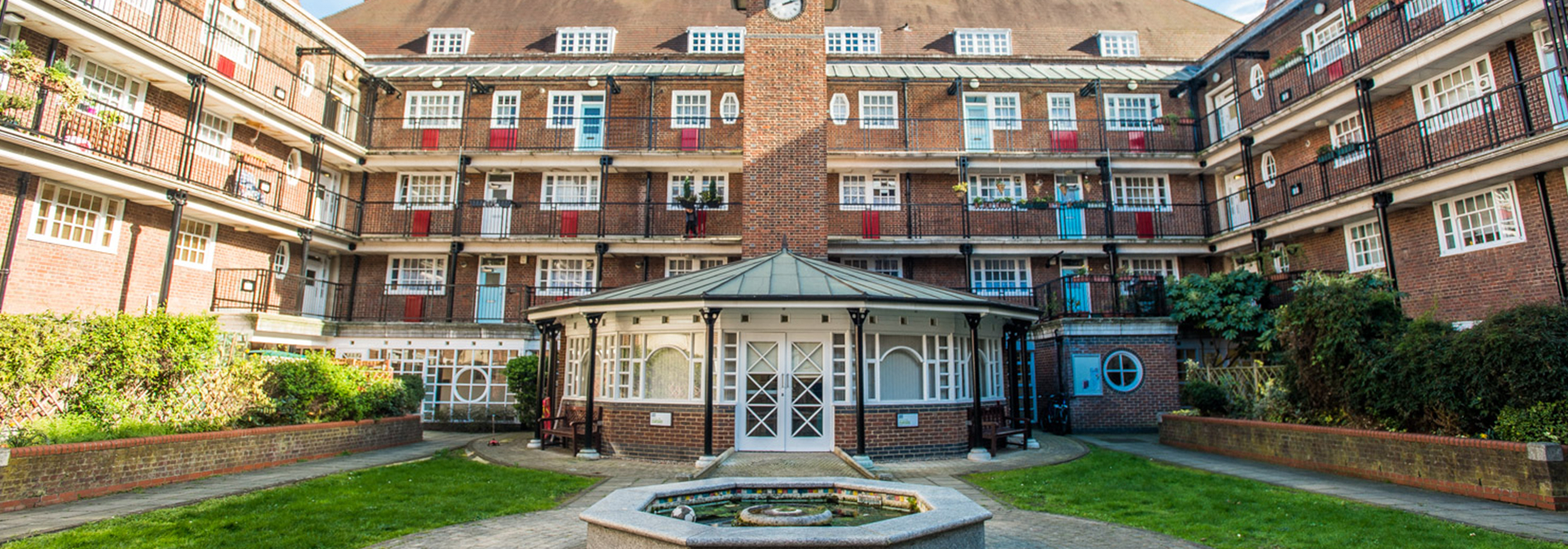Initially part of the Duchy of Cornwall estate in Kennington, the Grade II listed 1930s flats designed by Louis de Soissons were typical of many five storey walk-up flat blocks built in the inter-war years. The flats had become cold and expensive to heat, as there was no central heating or insulation. They were cramped and not suitable for modern families, with small kitchens, bathrooms without a basin, and bedrooms leading off living rooms. Windows were in need of maintenance, and open stairways had become a source of crime. As tenants moved out, flats were not being re-let to enable modernisation, but this increased the feeling of a neglected and run-down place to live.
The Prince of Wales had spoken out for the needs of ‘ordinary people’ and community architecture, leading by example by commissioning projects on his land. Hunt Thompson Associates was commissioned by the RIBA Pilot Group on behalf of Newquay House tenants to carry out a feasibility study, appraising options for the modernisation and management, giving tenants a say in changes to the place they called home. The results were remarkable and far more fulfilling for those involved than other estate regeneration projects at the time.


Using the approach pioneered at Lea View House, a Project Office was established in a vacant flat, Flat 62, and consultation began with formation of a Tenants Panel representing the tenants on the four staircases in the building and continued with a social survey. Regular meetings were held in the flat, and their progress shared with all the tenants in News Sheets. It had been a close-knit community, with a sons and daughters policy which meant two or more generations were living in different flats in the block. There were stories of celebrations and parties in the courtyard after the war, and supportive care-takers who helped take shopping upstairs for older tenants. Some of the tenants – John Humphreys, Carol Leonard, Steve and Jill Brickell and Ron Daw – took the lead and were able to explain emerging ideas to other tenants.
Once the demographics and needs were understood, ideas were tested for the modernisation. Turning around access, and creating new front doors on the street was an important move, as the courtyard could be secure. Creating family maisonettes on the ground and first floors on three sides, and flats suitable for people with disabilities and older people on the fourth side of the block was welcomed. At the heart of the courtyard a community room, which could be used by everyone as well as older tenants, overlooked new landscaped play and gardens for the maisonettes. Working out who moved where was discussed with residents around a model, known as the Newquay Game. Rules were agreed – older people moved once into a modernised flat, while some families were prepared to move twice in order to move into the home they preferred. Others decided they would rather move away.


Options for funding the scheme were explored with the idea of a Tenant’s Cooperative initially supported after visits to co-ops in Liverpool. Funding would be sourced from the Housing Corporation and a Building Society and the outcome would have a new Tenant’s Association managing the building for the benefit of its residents.
The process of the initial study was transformative as tenants who had felt powerless to change their situation became interested, enthusiastic and empowered to drive change. The hard work of Hunt Thompson drew the sincere thanks and affection of the people of Newquay House as the initial feasibility study was completed.
Patient negotiation was required with English Heritage over the proposals to alter the listed building. The argument was made that for the building to continue to be useful it needed to adapt to changing needs that now sought provision for families. Designs for entrance doors and windows were less contentious than removal of the heavy brick and concrete balconies inside the courtyard. Identified by the Structural Engineer as being in danger of failing the proposal to replace them with lighter steel and concrete balconies was eventually accepted. The new entrance doors had a distinct 1930s flavour and the new windows matched the appearance of the existing windows but were designed to be easier to clean from the inside. The introduction of a circular window in corners of the fourth floor was an idea from one of the tenants.
“Many many thanks to you both, from us the tenants of Newquay House. You have opened up a new life to us with your kindness and consideration, knitted together a community that was straying apart, shown us there was hope in a decaying area and worked and fought very hard, long hours – for which we are all very grateful…We are stimulated now and we will not let the work you have done go to waste. We are determined to reach the goal you have shown us can be reached…Without fail we all very much hope you will remain with us throughout the changes. Not only are you our architects, you have become our friends.”
Letter signed by twenty-six tenants of Newquay House, London, to architects Ben Derbyshire and Caroline Dove of Hunt Thompson Associates.


The sale of the block to London & Quadrant Housing Trust took time to negotiate, and delayed progress, but eventually funding was made available by the Housing Corporation. The spirit of cooperation continued with L & Q which organised the 1987 Christmas Party attended by residents, project team and the Prince of Wales. He cut the cake made by Arne and Caroline of HTA and the following day donated the fountain that now stands in the courtyard.
Tenants continued to be involved in the design and finishing of their homes, with personalised kitchen plans to accommodate their cookers and fridges, and individual colour schemes. One tenant’s daughter was studying horticulture and helped people in the ground floor maisonettes plant their front gardens, while a group of tenants and their children helped plant raised beds in the courtyard. Families reported great improvement in health after moving from cold, damp and mouldy flats into warm spacious maisonettes, and they were no longer kept awake all night by children with asthma. The new, open balconies encouraged sociability as new residents moved in and the community grew.
